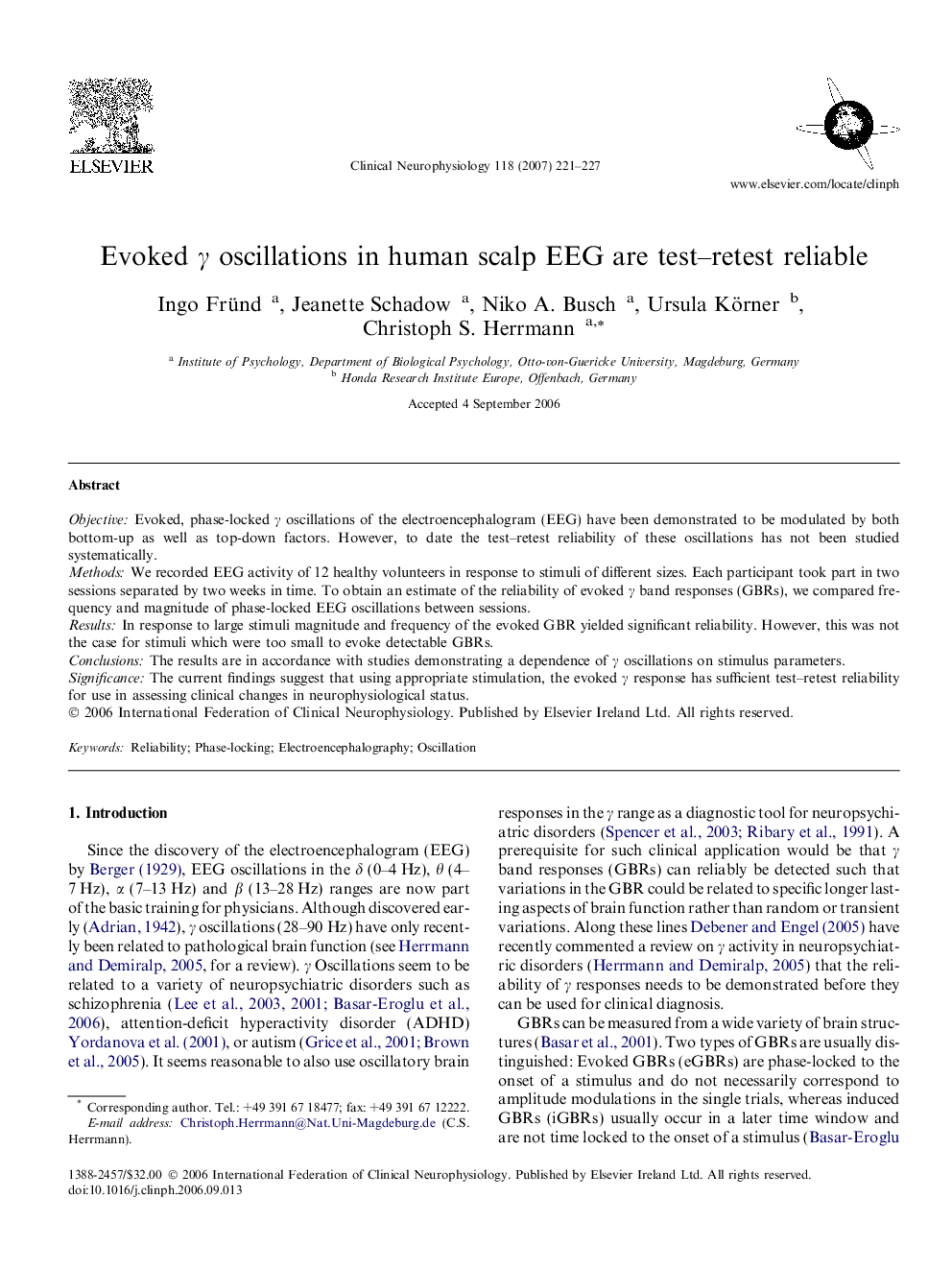| Article ID | Journal | Published Year | Pages | File Type |
|---|---|---|---|---|
| 3048188 | Clinical Neurophysiology | 2007 | 7 Pages |
ObjectiveEvoked, phase-locked γ oscillations of the electroencephalogram (EEG) have been demonstrated to be modulated by both bottom-up as well as top-down factors. However, to date the test–retest reliability of these oscillations has not been studied systematically.MethodsWe recorded EEG activity of 12 healthy volunteers in response to stimuli of different sizes. Each participant took part in two sessions separated by two weeks in time. To obtain an estimate of the reliability of evoked γ band responses (GBRs), we compared frequency and magnitude of phase-locked EEG oscillations between sessions.ResultsIn response to large stimuli magnitude and frequency of the evoked GBR yielded significant reliability. However, this was not the case for stimuli which were too small to evoke detectable GBRs.ConclusionsThe results are in accordance with studies demonstrating a dependence of γ oscillations on stimulus parameters.SignificanceThe current findings suggest that using appropriate stimulation, the evoked γ response has sufficient test–retest reliability for use in assessing clinical changes in neurophysiological status.
